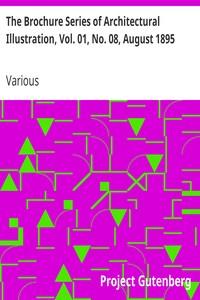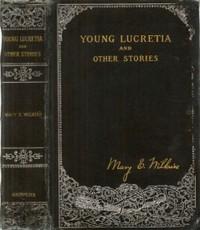|
|
Read this ebook for free! No credit card needed, absolutely nothing to pay.Words: 6999 in 3 pages
This is an ebook sharing website. You can read the uploaded ebooks for free here. No credit cards needed, nothing to pay. If you want to own a digital copy of the ebook, or want to read offline with your favorite ebook-reader, then you can choose to buy and download the ebook.

: The Brochure Series of Architectural Illustration Vol. 01 No. 08 August 1895 Fragments of Greek Detail by Various - Architecture Periodicals The Brochure Series of Architectural Illustration@FreeBooksTue 06 Jun, 2023 THE BROCHURE SERIES OF ARCHITECTURAL ILLUSTRATION. FRAGMENTS OF GREEK DETAIL. The Art of Greece during the fifth century, B.C., was developed in an amazingly short time from a condition of almost archaic rudeness to that of the greatest perfection which the world has ever seen. At the close of the Persian wars the Athenians, under Pericles, began rebuilding their city and perfecting themselves in all the arts of civilization, and their progress in the next half century will always be a subject for wonder. It is especially wonderful that works of art of the character produced at this time should have been the outcome of political maneuvering: for if Plutarch is to be credited the scheming of Pericles to obtain and hold possession of the government of Athens was the immediate cause of the erection of these marvellous monuments. In order to increase his influence with the common people Pericles devoted the treasure which had been contributed by the other Greek cities for defence against the barbarians to the beautifying of Athens, and to furnishing them with games and amusements, and especially to the erection of the group of temples upon the Acropolis, in this way distributing patronage and keeping his people employed much as a modern political "boss" does the same in our day. The Parthenon, which is esteemed the grandest of all monuments of Greek art, embodying as it does the highest achievement in sculpture and architecture, was built just after the middle of the fifth century, although the precise date at which it was begun and finished is uncertain. The Erechtheion and Propylaea were probably built a few years later, but their exact dates are also in doubt. The sculptor, Phidias, was the friend and adviser of Pericles and to him was given the general charge of all matters relating to art. Under him were grouped architects, sculptors, and artisans of all schools and trades--Ictinus and Calicrates as architects of the Parthenon, Mnesicles of the Propylaea, and many others--such an assemblage as only Greece in her most glorious epoch could bring together. The work of this period shows that happy union of technical perfection and the expression of only the loftiest ideas, in which, as Plutarch says, the architect made it his ambition to "surpass the magnificence of his design with the elegance of its execution." The skill and delicacy as well as the subtle appreciation of refinements of form and finish exhibited in the treatment of details such as those shown in our plates are almost beyond comprehension. The workmanship is so perfect that it is difficult to see how it could be improved upon. Stuart, in his account of the Parthenon, states that he found two stones, one merely laid upon the other in the stylobate of this building, which had been ground to so fine a joint that they had actually united and become one. The refinements in measurements are such that it has been asserted that a variation of one twentieth of an inch from the dimensions intended is all that need be allowed--the width of the two ends of the building agreeing to within this amount. The entasis of columns and curvature of what would ordinarily be straight lines is familiar to all students of architecture. CAPITAL FROM THE PARTHENON, ATHENS. The Parthenon of Pericles was built on the site of an older temple as a treasury, and repository of the colossal statue of Athena, made by Phidias from gold and ivory. The Doric order, the capital of which is shown in our plate, needs no description here as probably no other single order is so generally known. After various transformations the building was blown up by the Venetians in 1687 and has since remained in ruins. CAPITAL FROM THE ERECHTHEION, ATHENS. BASE FROM THE ERECHTHEION, ATHENS. Free books android app tbrJar TBR JAR Read Free books online gutenberg More posts by @FreeBooks
: George Borrow and His Circle Wherein May Be Found Many Hitherto Unpublished Letters of Borrow and His Friends by Shorter Clement King - Borrow George 1803-1881 Biographies@FreeBooksTue 06 Jun, 2023

: Young Lucretia and Other Stories by Freeman Mary Eleanor Wilkins - Conduct of life Juvenile fiction; Children's stories; Children Conduct of life Juvenile fiction; New England Social life and customs Juvenile fiction@FreeBooksTue 06 Jun, 2023
|
Terms of Use Stock Market News! © gutenberg.org.in2025 All Rights reserved.






